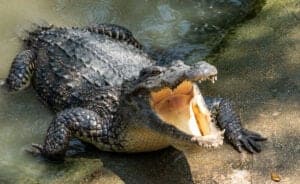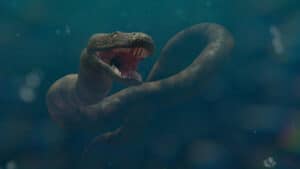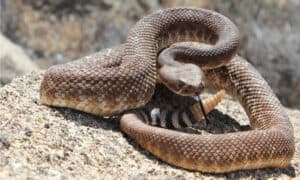The Tigris River is the second-largest river in Western Asia. It flows parallel to the Euphrates River and is the easternmost river that defines Mesopotamia (literally “between two rivers”).
The Tigris River rises in the Taurus Mountains of eastern Turkey and flows along the Syria/Turkey border before entering Iraq, where most of the river lies. Its basin is shared by Iran, Iraq, Syria, and Turkey. Eventually, the Tigris joins the Euphrates and enters the Persian Gulf. The entire river is 1,750 km (1,090 mi) in length.

Snakes Are Being Displaced from the Banks of the Tigris and Euphrates Rivers
The Tigris River and its water basin give life to a variety of animals, but this river, along with the Euphrates, has begun to dry up. As drought plagues Iraq, more and more snakes are displaced from their homes in the river’s reed beds, and some have been attacking humans and cattle.
“We knew these snakes before, but now they are coming in huge numbers. They are attacking buffalo and cattle as well as people,” Jabar Mustafa, a medical administrator, who works in a hospital in the southern province of Dhi Qar, told The Independent.
While some of Iraq’s snakes are harmless, there are several dangerous species. The outlet reports 6 deaths and 13 poisonings from snake bites in Mustafa’s area. In this article, we will examine the major snakes that call the Tigris and its river basin their home.
1. Dice Snake
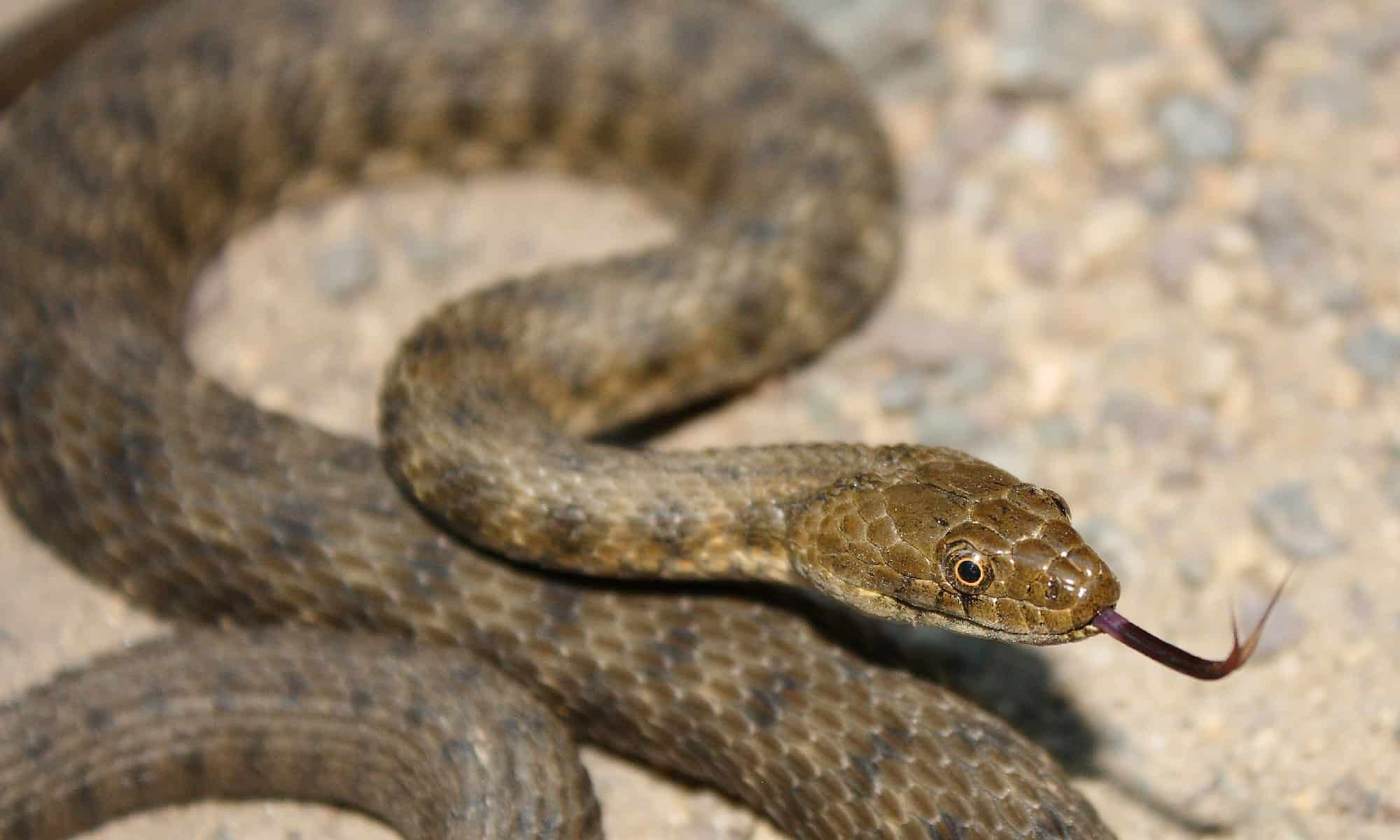
Dice snakes are nonvenomous semiaquatic snakes native to Eurasia.
©iStock.com/Zdenek Macat
The dice snake (Natrix tessellata) is one of the most common species of the Tigris River, according to Diyarbakir’s Memory. Thankfully, these creatures are nonvenomous and relatively harmless to humans.
Dice snakes live near bodies of water such as rivers, lakes, and streams. They are able swimmers and divers and feed on fish and amphibians such as frogs and toads.
Dice snakes range in color from greyish green to brown or almost black. They typically have dark spots on their backs. Dice snakes may also have a brightly colored belly with black spots, giving them the appearance of dice.
2. Black Whipsnake
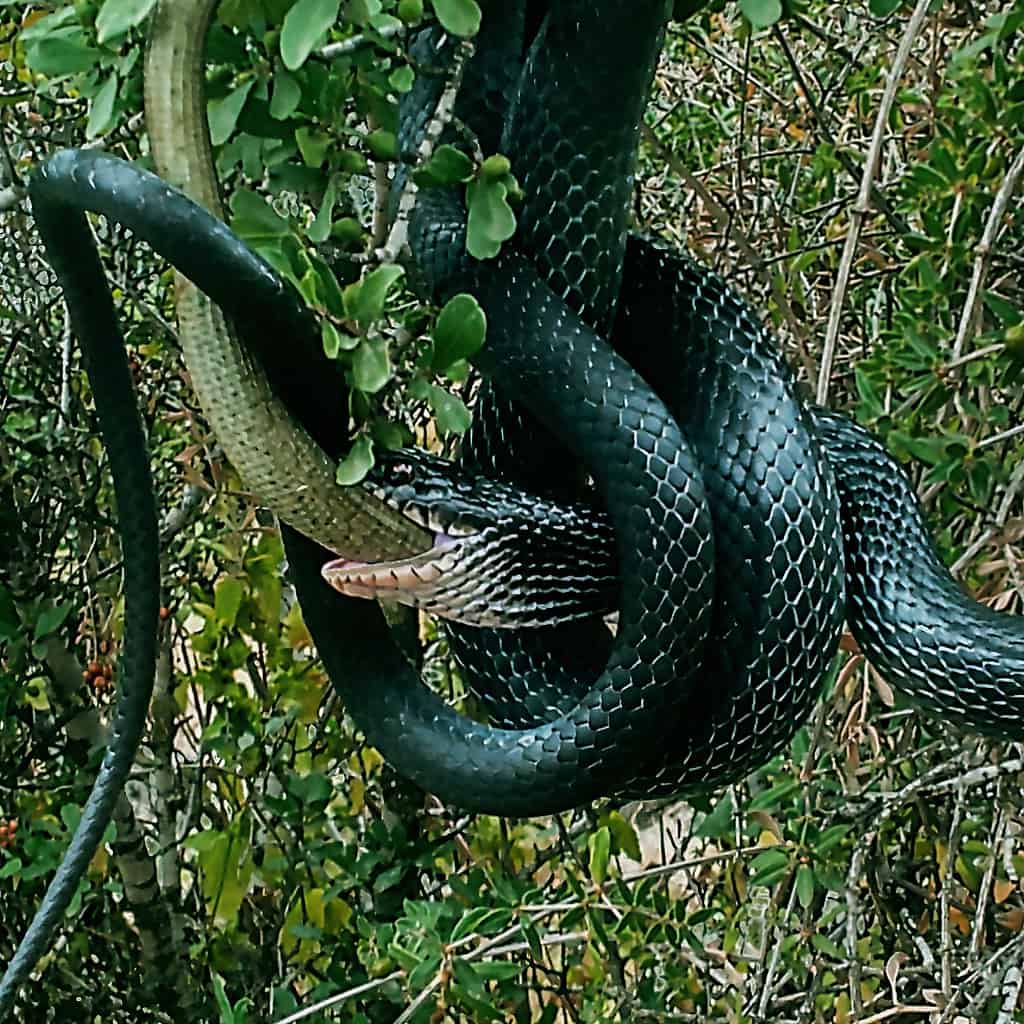
While the black whipsnake is nonvenomous, its bite is painful and its mildly toxic saliva can cause numbness and swelling.
©yigal gini / CC BY 2.5 – License
The black whipsnake (Dolichophis jugularis) or large whipsnake is another common species that makes its home near the Tigris River. This species is nonvenomous and can grow quite long.
Black whip snakes may become aggressive if they feel threatened. According to Bird HQ, their bite is painful and delivers mildly toxic saliva, though the damage in humans won’t cause anything worse than numbness and swelling.
As their name suggests, black whipsnakes have a shiny black back and white bellies. They prefer the open grasslands around the Tigris River basin and hunt birds, frogs, and other reptiles.
3. Red-Bellied Racer
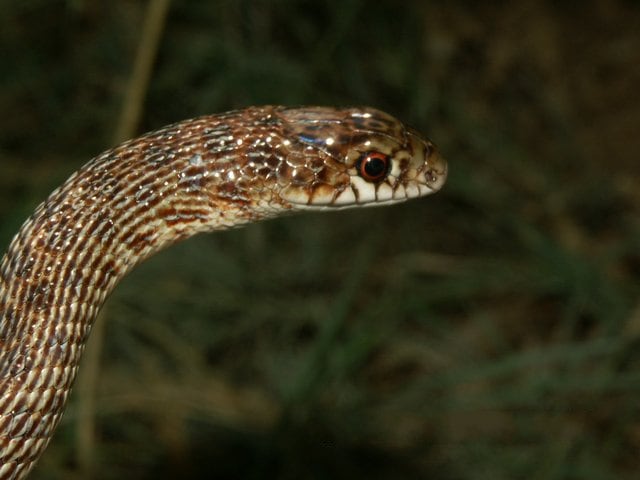
Red-bellied racers are endemic to West Asia, inhabiting rocky and stony habitats and bushy river banks.
©Václav Gvoždík / CC BY-SA 2.5 – License
The red-bellied racer (Dolichophis schmidti) also known as Schmidt’s whip snake is a species endemic to West Asia. They live in a variety of habitats including rocky, stony, and bushy river banks.
Red-bellied racers are nonvenomous creatures that feed on rodents, lizards, birds, and other snakes. The species ranges in color, but the most distinctive-looking varieties are a beautiful shade of dark red. Schmidt’s whip snake was named after the Russian zoologist Petr Yulevich Schmidt.
4. Javelin Sand Boa
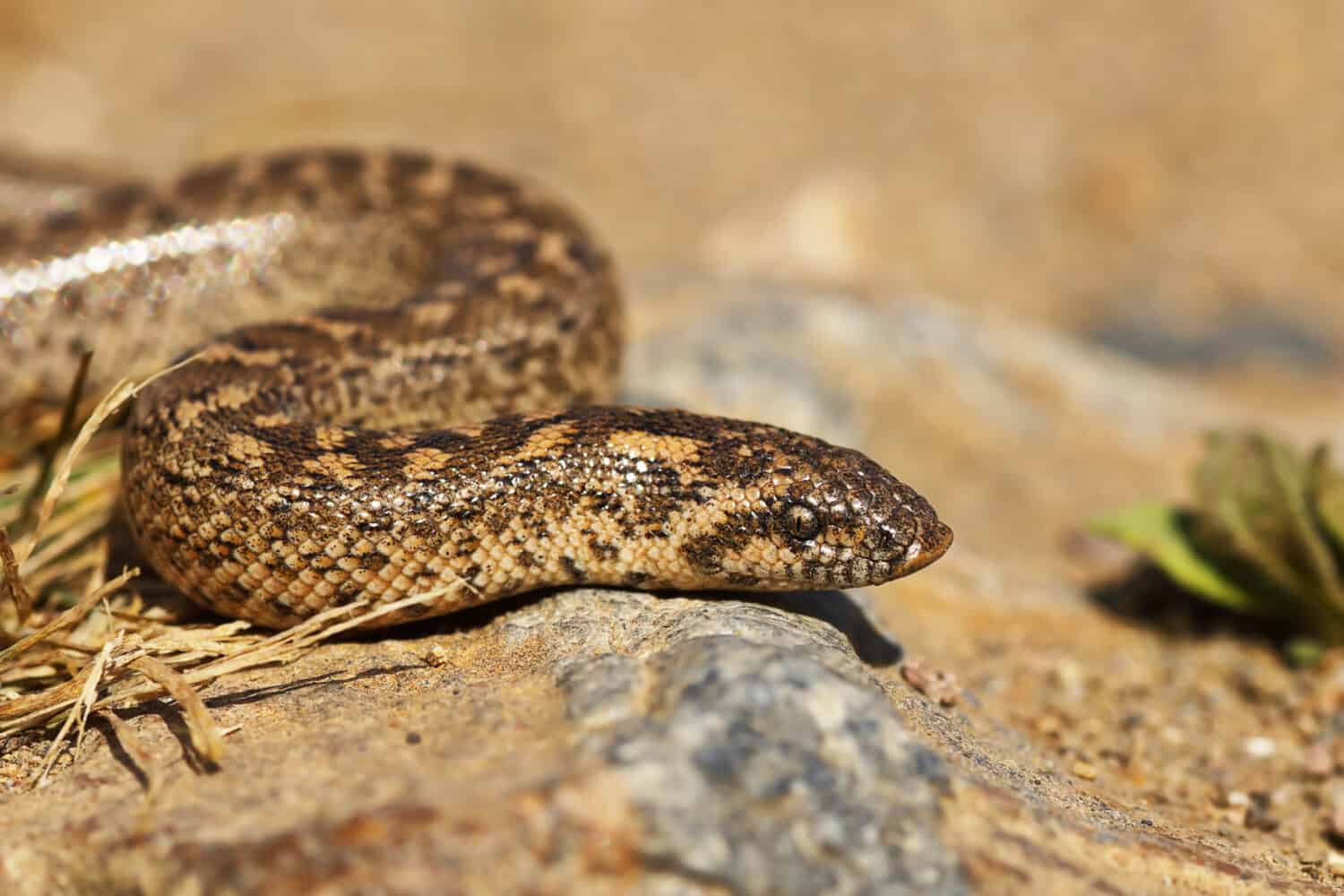
Javelin sand boas have thick bodies with an irregular color pattern.
©taviphoto/Shutterstock.com
Javelin sand boas (Eryx jaculus) are rarer snakes that may be found along the Tigris. In fact, this snake species was once thought to be extinct in certain parts of the world but has reappeared in Romania and Italy in the 21st century.
The javelin sand boa also makes its home in the Middle East. Boas like Eryx jaculus can swim well, though they prefer to stay on dry land for the most part. They are also nonvenomous creatures. The javelin sand boa typically eats small mammals, lizards, and reptile eggs.
This reptile also comes in a variety of colors. The snake’s back is typically grayish, tan, brownish, or reddish in color with irregular darker blotches and a white or yellowish belly.
5. Narrow Striped Dwarf Snake
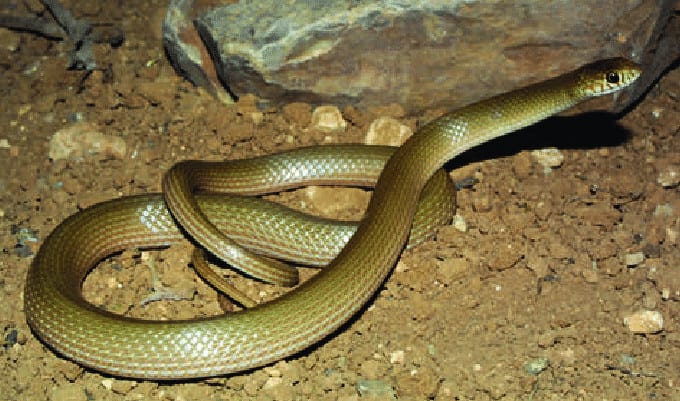
The non-venomous narrow-striped dwarf snake inhabits West Asia and the Middle East.
©Zuhair Amr / Public Domain – License
Narrow-striped dwarf snakes (Eirenis decemlineatus) make their home in West Asia and the Middle East. They are a small nonvenomous species that enjoy rocky areas within pine and oak forests.
Narrow-striped dwarf snakes are typically brown in color, sometimes with two narrow dark stripes down the length of their body. This harmless species eats large insects, as well as spiders, scorpions, and centipedes.
6. Levantine Viper
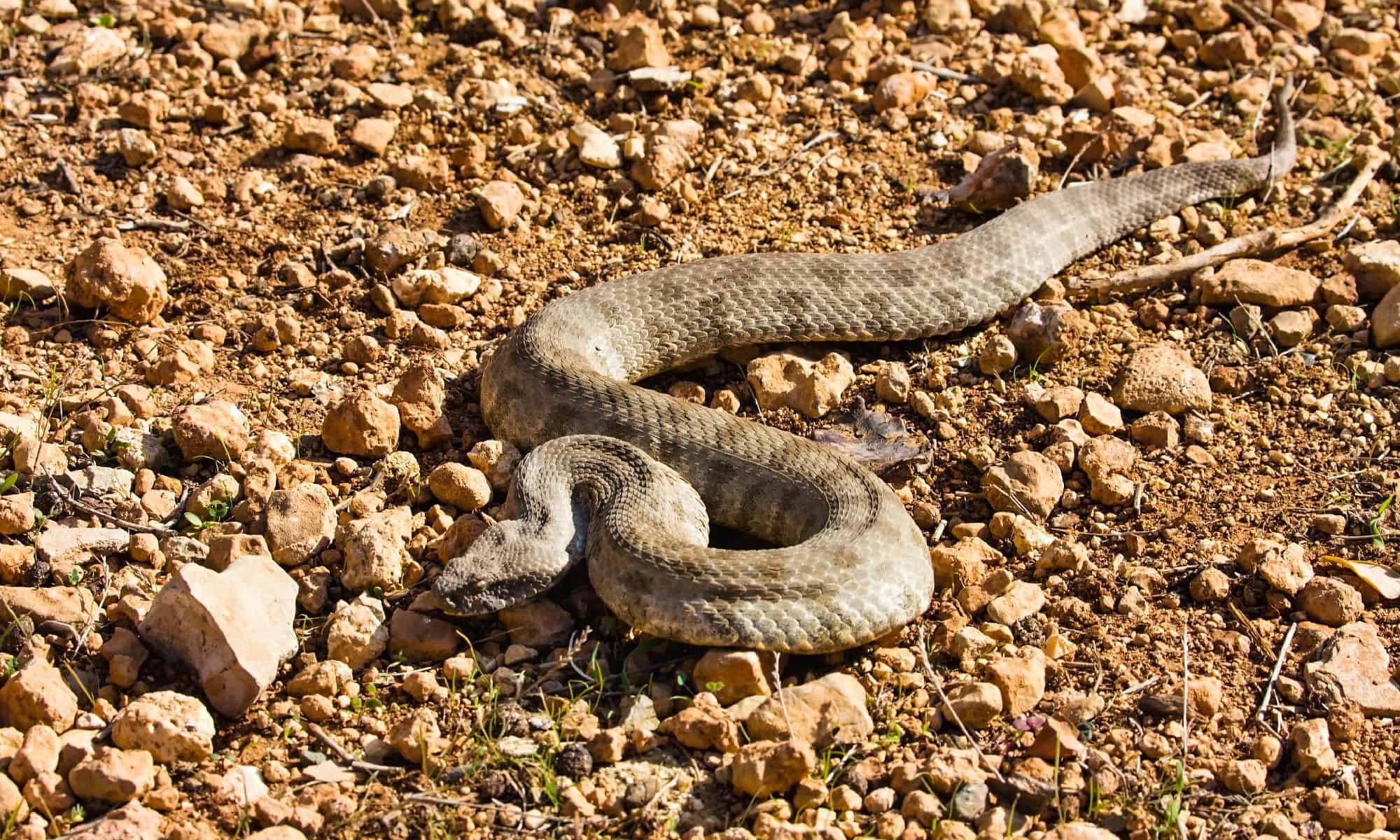
Levantine vipers are a venomous species with triangle-shaped heads.
©Vladislav T. Jirousek/Shutterstock.com
The Levantine viper (Macrovipera lebetinus) is a large and venomous species found in Northern Africa and the Middle East. They have a broad, triangular head and are often grey, brown, olive, or khaki-colored with saddled or zigzag patterns on their back.
Venom from the Levantine viper is dangerous, however, it is not currently included in the manufacture of Indian polyvalent anti-snake venom, according to the National Library of Medicine.
Instead, medical professionals recommend managing Levantine viper bites without Indian anti-snake venom. In some cases, alternative anti-snake venoms may need to be sourced.
7. Saw-Scaled Viper
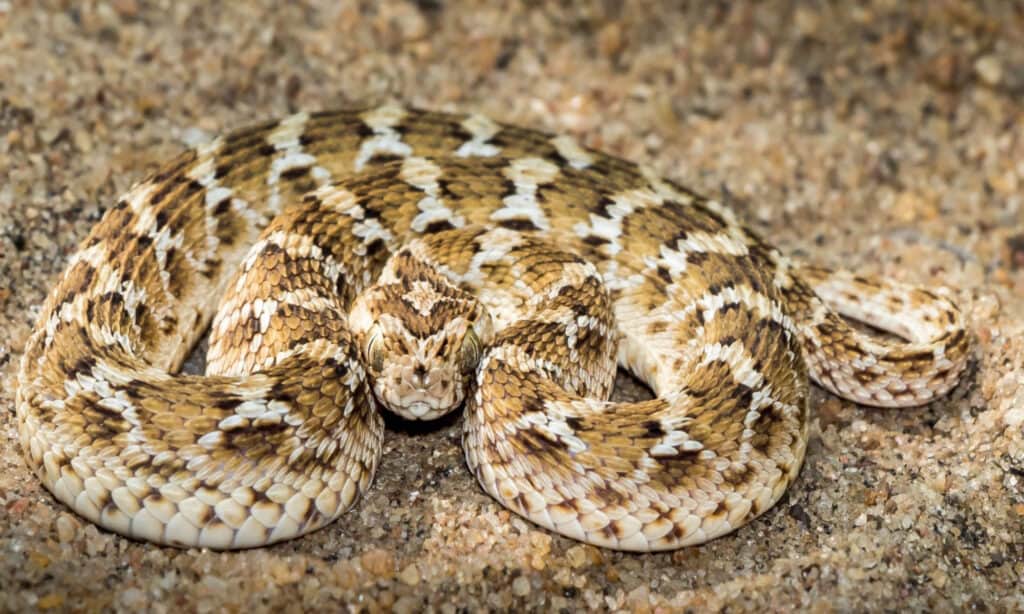
The saw-scaled viper is responsible for more deaths than any species of venomous snake in the world.
©Dushan Muthunayake/Shutterstock.com
According to The Independent, the saw-scaled viper (Echis carinatus) is blamed for more deaths than any species of snake in the world. Although they are smaller in size, saw-scaled vipers are irritable, aggressive, and quick to strike.
They have a very powerful venom that causes extensive internal hemorrhaging. Mortality rates for humans bitten by this snake are high. Saw-scaled vipers have thick bodies with pear-shaped heads. They are typically brown, gray, or dull orange in color with patterns of blotches or spots.
Saw-scaled vipers eat a variety of prey, including small mammals, lizards, birds, other snakes, scorpions, and centipedes. When threatened, they can rub sections of their scales together to produce a kind of hissing sound.
8. Desert Horned Viper
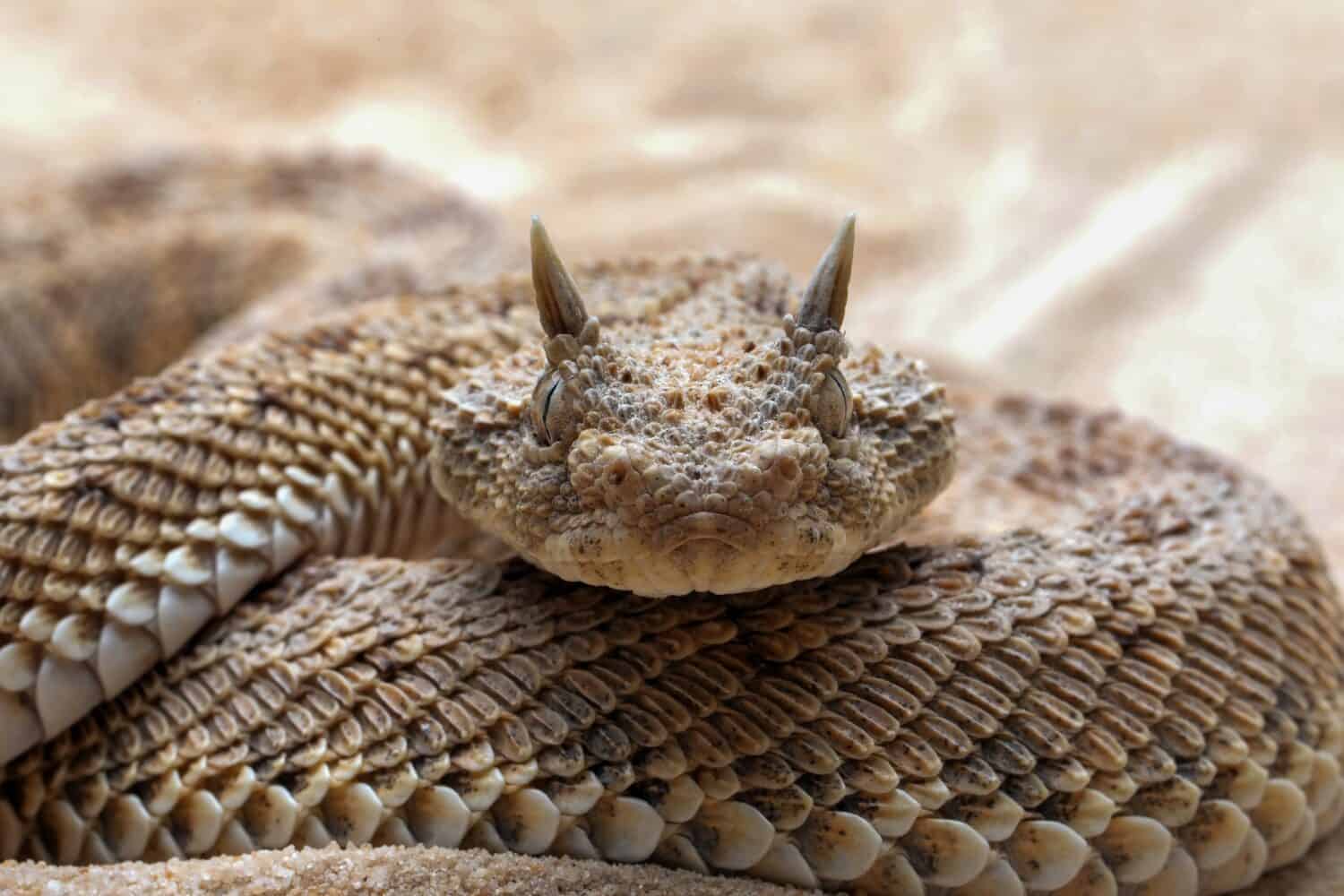
Desert horned vipers are commonly found in the deserts of Iraq.
©Lauren Suryanata/Shutterstock.com
Desert horned vipers (Cerastes cerastes) are a common sight in Iraq’s southern deserts. They are distinctive-looking snakes with a pair of supraorbital “horns” over each eye. Desert horned vipers typically have yellow, light brown, or pale grey color patterns in order to blend in with their desert environment.
They are venomous creatures and a bite from these vipers can be fatal to humans. Like many snakes, they prey on rodents, geckos, birds, and lizards.
9. Desert Cobra
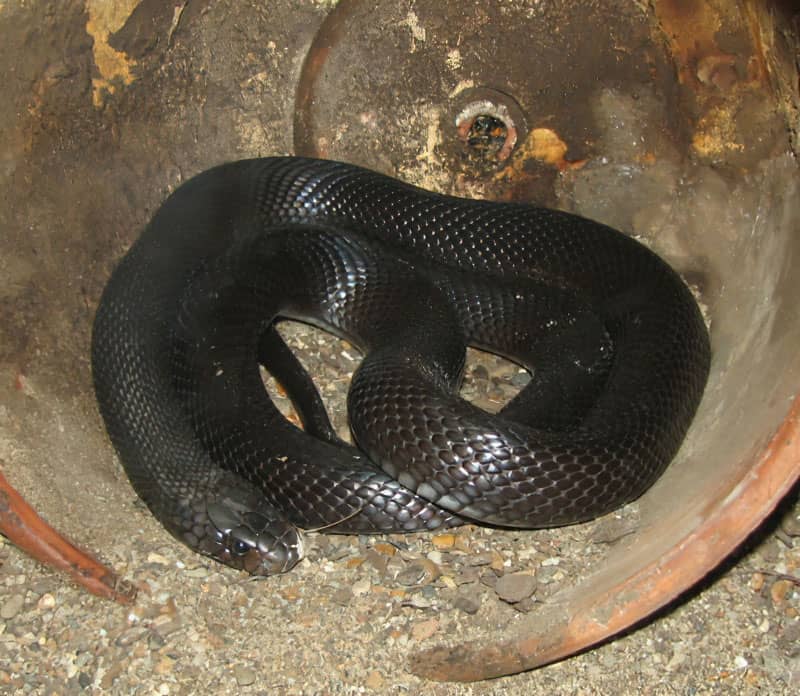
©Ltshears / public domain – License
The desert cobra (Walterinnesia aegyptia) is a venomous snake native to the Middle East. They are typically black in color with shiny scales.
As their name suggests, desert cobras prefer deserts, scrubland, and rocky terrain. Unfortunately, they also tend to make their way to human settlements where they can find shelter and rodents. Desert cobras are not picky eaters and will also consume lizards, skinks, geckos, and even carrion.
10. Persian Gulf Sea Snake

Hydrophis is a genus of venomous sea snakes, of which Hydrophis lapemoides is a member.
©Image from Brehms Tierleben, 2nd Ed. 1882-1887 / Public Domain – License
The Tigris River joins with the Euphrates at the end of its course and empties into the Persian Gulf. This body of water is home to the Persian Gulf sea snake (Hydrophis lapemoides), a venomous species that inhabits marine environments.
This species has a flattened tail to help it swim and can also enter freshwater bodies of water for a period of time. They typically feed on fish and are yellow, olive, or gray in color with darker-colored banding.
Summary of the 10 Snakes of the Tigris River
| Snake | Average Length | Venomous? | |
|---|---|---|---|
| 1 | Dice Snake | 3-4 feet | No |
| 2 | Black Whipsnake | 3.2 feet | No |
| 3 | Red-Bellied Racer | 3-5 feet | No |
| 4 | Javelin Sand Snake | 2.5 feet | No |
| 5 | Narrow Striped Dwarf Snake | 1-3 feet | No |
| 6 | Levantine Viper | 3-5 feet | Yes |
| 7 | Saw-Scaled Viper | 2 feet | Yes |
| 8 | Desert Horned Viper | 1-2 feet | Yes |
| 9 | Desert Cobra | 3-4 feet | Yes |
| 10 | Persian Gulf Sea Snake | 3.6 feet | Yes |
The photo featured at the top of this post is © Sanatkar/Shutterstock.com
Discover the "Monster" Snake 5X Bigger than an Anaconda
Every day A-Z Animals sends out some of the most incredible facts in the world from our free newsletter. Want to discover the 10 most beautiful snakes in the world, a "snake island" where you're never more than 3 feet from danger, or a "monster" snake 5X larger than an anaconda? Then sign up right now and you'll start receiving our daily newsletter absolutely free.
Thank you for reading! Have some feedback for us? Contact the AZ Animals editorial team.



